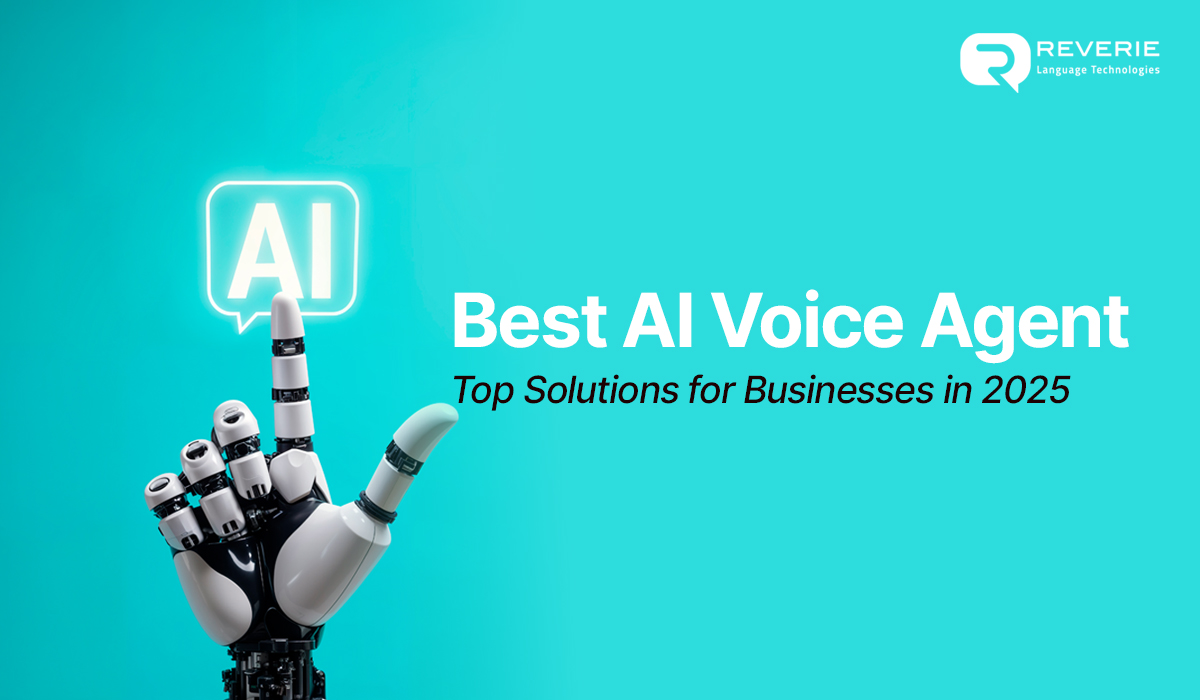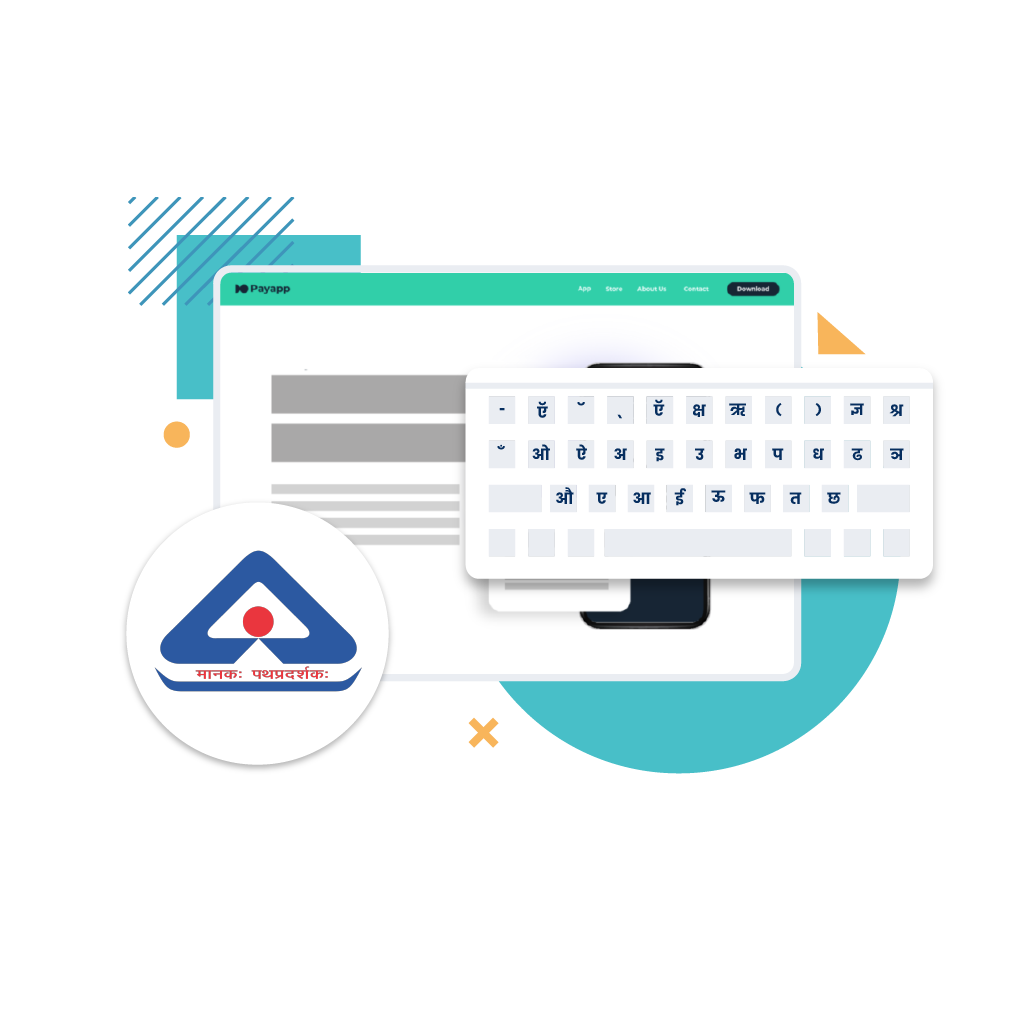There is a quiet revolution taking place in the way businesses communicate, and it speaks your language. Literally, from IVR systems that made us tap through endless menus, we have entered an era where voice AI agents can understand, respond, and adapt just like a skilled human representative.
Fueled by advancements in generative AI, multilingual speech tech, and contextual NLU, these agents are no longer experimental now.
And while the market is flooding with new entrants, not all voice agents are created equal. Below are the 7 best AI voice agent solutions designed to solve real business problems and deliver enterprise-grade impact.
The Top AI Voice Agents Transforming Enterprise Workflows in 2025
Before jumping into selection, clarity matters: today’s leading voice agents aren’t just chatbots with a mic. These are dynamic, AI-powered systems that combine multilingual intelligence, emotional context, seamless integrations, and industry-specific agility, engineered to perform in high-stakes, real-world environments.
We are no longer asking if voice agents can replace traditional service channels. The question now is which one will replace yours the best. Here is a list of the top companies in AI voice agents that stand out in 2025:
AI Voice Agent | Language Strength | Ideal Use Case | Key Advantage |
Indocord | Native fluency in 22 Indian languages | Public sector, regulated industries | Regionally optimised + no-code agility |
Tabbly.io | 50+ global languages | Lead qualification, recruitment | Rapid voice agent deployment |
PlayHT | Global TTS with voice realism | IVR, voice apps, product onboarding | Human-like speech generation |
Cognigy | Deep NLU, support for 100+ languages | Contact center optimization | Intelligent routing + improved first-call resolution |
VoiceGenie | 13+ Indian languages & 100+ global languages & dialects | Mid-funnel sales engagement, lead follow-up | Voice-driven lead qualification & nurturing |
CallHippo | Multilingual telephony-ready | Inbound call handling, global routing | VoIP-native automation |
Synthflow | English-centric | SMBs, booking flows, outbound calls | Lightweight + no-code interface |
1. IndoCord by Reverie
IndoCord is a domain-first, regulation-ready best AI voice agent tailored for India’s linguistic and operational diversity. Built by Reverie, it delivers public-sector-grade automation with an intuitive no-code builder, empowering businesses and governments to deploy conversational bots in multiple Indian languages without compromising on security or user experience.
- Features:
- Multilingual Voice APIs for Indian Languages: Integrates high-accuracy Speech-to-Text, Text-to-Speech, and NLU in 22 Indian languages.
- No-Code Bot Creation Platform: Empowers non-technical teams to build and modify bots with simple UI tools, cutting development cycles.
- Compliance-First Infrastructure: Designed with encryption, authentication, and audit trails to meet public sector and enterprise regulatory demands.
- Generative AI with Context Awareness: Leverages LLMs and industry-specific NLU models for understanding intent and delivering intelligent responses.
- Agile Business Template Library: Includes pre-built, customisable voicebot templates optimised for sectors like governance, BFSI, telecom, and citizen service.
2. Tabbly.io
Tabbly positions itself as a builder-first platform focused on empowering businesses to deploy a human-like AI voice agent in minutes. While the marketing site is currently light on specifics, Tabbly’s positioning across listings and reviews suggests it supports quick agent deployment for customer support, HR, sales qualification, and appointment flows.
Features:
- Instant Agent Deployment: Create and activate voice agents quickly through a simplified user interface.
- Human-Like Conversational AI: Designed to simulate natural dialogue patterns, reducing drop-offs and creating smoother user interactions.
- Lead Qualification and Routing: Use voice agents to capture user data, qualify prospects, and sync with CRM tools to streamline sales and hiring processes.
- Support Ticket Deflection: Handle FAQs and recurring customer questions through intelligent voice prompts, reducing agent load and support costs.
3. PlayHT
PlayHT specialises in ultra-realistic neural text-to-speech (NTTS) that brings synthetic voices to life with human nuances like intonation, rhythm, and emotional inflection. It’s built for enterprises seeking expressive voice automation for training modules, IVRs, support systems, and brand-led voice experiences.
Features:
- Neural Text-to-Speech Engine: Built on NTTS, PlayHT delivers expressive, lifelike voice synthesis ideal for real-time applications.
- Emotional Voice Variants: Select from voices that convey empathy, excitement, or calmness to match user sentiment or brand tone.
- Rapid API Integration: Developers can quickly embed voices into support systems, virtual assistants, or multimedia content with robust, fast APIs.
- Use Case-Driven Voice Packs: Custom voice bundles available for specific scenarios like IVRs, onboarding journeys, or learning modules.
4. Cognigy
Cognigy offers advanced Voice AI agents built to enhance contact center performance. It replaces rigid IVR systems with dynamic voice automation that routes, understands, and resolves queries with conversational intelligence. It’s engineered for enterprises managing large volumes of support interactions.
Features:
- Conversational and Routing Intelligence: Streamlines navigation by understanding intent and directing calls without the inefficiencies of menu-based systems.
- Improved First-Call Resolution: Optimizes agent handoff and automates resolution for high-frequency queries, reducing repeat calls and wait times.
- Natural Language Engagement: Delivers human-like voice interactions that elevate customer experience across complex support environments.
- Contact Center Optimization: Integrates directly into enterprise call systems to boost efficiency and reduce operational load.
5. VoiceGenie
VoiceGenie focuses on sales-centric voice automation, helping teams qualify leads and nurture them throughout the funnel with minimal human interaction. It delivers proactive engagement via AI-powered outbound and inbound calls, designed to drive efficiency in sales outreach and mid-funnel conversion flows.
Features:
- Automated Lead Qualification: Uses voice AI to assess buyer readiness and suitability, allowing sales teams to focus on high potential leads.
- Voice Driven Lead Nurturing: Maintains consistent, personalised communication throughout the buyer journey without overloading live agents.
- Sales Workflow Integration: Aligns with mid-funnel processes to automate follow-ups and guide prospects to conversion efficiently.
- Scalable Campaign Handling: Supports outbound engagement at volume, enabling high-frequency sales workflows without sacrificing personalisation.
6. CallHippo
CallHippo’s AI Voice Agent adds voice automation to its existing cloud telephony platform, aimed at helping teams manage large inbound call volumes without sacrificing response time or routing accuracy. Its design is fitting for mid-sized sales and support operations that need voice-enabled flows without deep AI customisation.
Features:
- Inbound Call Automation: Uses AI-powered voice workflows to answer FAQs, capture caller intent, and resolve basic queries instantly.
- 24/7 Smart Call Routing: Automatically directs calls to the right department or agent based on voice inputs and custom workflows.
- Plug-and-Play with VoIP Infrastructure: Fully integrated with CallHippo’s telephony stack, requiring no additional tools or APIs for voice setup.
- Multichannel Reach and Local Number Support: Supports calls from global customers using localised virtual numbers, useful for businesses expanding into new geographies.
7. Synthflow AI
Synthflow is designed for fast voice automation without engineering overhead. Its no-code environment is suited to teams looking to automate appointment reminders, follow-ups, or basic inbound call handling with minimal setup. This AI voice agent doesn’t offer the deep NLU capabilities of enterprise tools, but it excels where simplicity and speed are more critical than complexity.
Features:
- Drag-and-Drop Conversation Builder: Enables non-technical users to define voice flows, decision logic, and fallback paths without writing code.
- Outbound and Inbound Call Support: Automates outbound voice touchpoints and handles inbound calls with scripted, AI-guided interactions.
- Robocall Compliance Readiness: Designed to meet legal standards for automated voice calls, including consent-based outreach.
- AI-Powered Voice Prompt Customisation: Customise tone, script logic, and fallback conditions for better caller experience and call completion rates.
Selecting the Best Voice AI Agent for Your Workflow
AI voice agents are everywhere in 2025, but not all are built to solve your enterprise problems. According to a study by Opus Research, over 97% of enterprises already use some form of voice AI, and 67% consider it foundational to their business strategy. Yet only 1 in 5 enterprises are fully satisfied with their current systems, signaling an urgent need for more advanced, lifelike, and customisable solutions.
The wrong fit leads to frustration, wasted effort, and even lost revenue. Below are the core criteria that separate voice tech that works on paper from solutions that deliver consistently in the real world.
- Define Clear Interaction Goals
Before evaluating platforms, pin down where human interaction currently stands—first-call resolutions, wait times, multilingual gaps, repetitive escalations. Your selection should begin where your service quality and throughput slow down, not where AI features look advanced.
- Map System Compatibility
Even the most advanced voice agent will underperform if it’s not built to communicate across your ecosystem. Assess whether you rely on existing CRMs, on-premise workflows, or distributed support desks. Ensure compatibility is handled at the API, data sync, and permissions layer, not after deployment.
- Evaluate Multilingual and Regional Readiness
If your audience spans geographies or speaks in multiple languages, assess how well the system handles local language understanding. IndoCord, for example, is purpose-built for businesses and institutions operating in Indian languages, offering native STT, TTS, and voice interaction capabilities across diverse dialects.
- Prioritise Security and Auditability
If your voice AI handles Personally Identifiable Information (PII), account data, or transaction records, you will need confidence in how it’s logged, encrypted, and governed. Check for granular access control, deployment region options, and compatibility with internal audit and compliance workflows.
- Observe Latency and Load Handling Under Stress
High concurrency support and low-latency response are benchmarks that separate consumer-grade tools from enterprise-ready systems. Don’t just verify call quality in ideal conditions—test against peak traffic loads, edge-case intents, and fallback scenarios.
AI Voice Agent That Works Like Your Business Does
Most enterprises already operate with some layer of voice AI, but usage doesn’t guarantee a return. AI platforms demonstrate well in contained environments, but only a few are built to function inside the complexity of real operations. The ideal system blends adaptability, infrastructure fit, and workflow clarity without forcing your teams to reinvent processes.
Among the options available today, Reverie’s IndoCord stands out for its sharp focus on multilingual coverage, operational flexibility, and no-code adaptability. Built for multilingual operations with regulatory depth, it reflects real-world workflows instead of forcing generic automation.
Explore how IndoCord fits into your environment. Book a free demo and test its capabilities on your terms.
Faqs
What defines an enterprise-grade voice AI agent?
It handles high call volumes, integrates with core systems, supports customisation, and meets compliance requirements.
How does IndoCord address multilingual needs?
IndoCord offers native voice automation in 22 Indian languages, with built-in compliance and no-code customisation for rapid deployment.
Where should voice AI replace human agents?
Use it for high-frequency tasks like FAQs and routing. Keep human agents for complex, high-emotion interactions.
How do I choose the right voice agent?
Match it to your workflows, tech stack, and language scope. Prioritise adaptability and integration, not just features.
Does IndoCord support secure deployments for regulated sectors?
Yes, IndoCord includes encryption, access controls, and audit-ready infrastructure, suitable for BFSI, public sector, and telecom.


